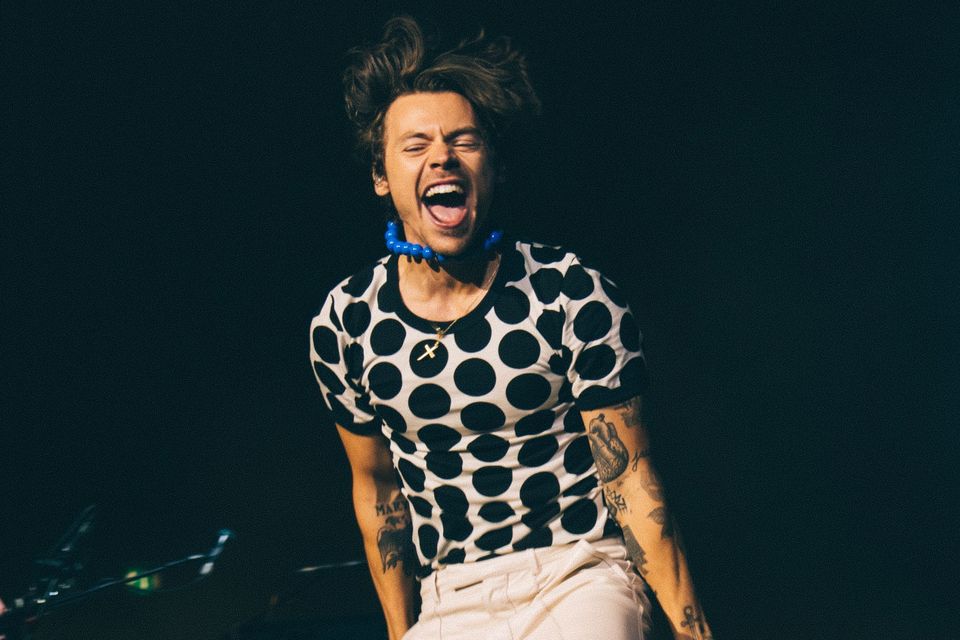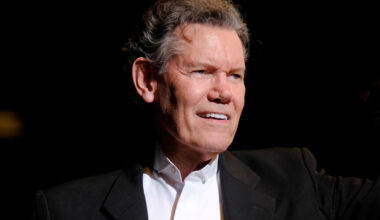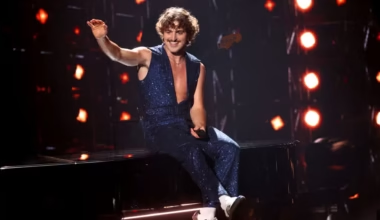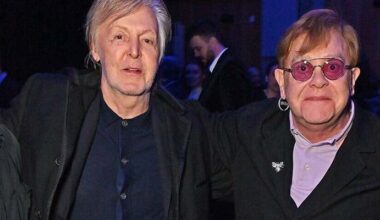The music world is once again gripped by Harry Styles, but not in the way anyone expected. In a year saturated with flashy debuts and surprise collaborations, no one predicted that multiple old No. 1 hits from the former One Direction frontman would quietly return to dominate the charts. Yet here we are — and the ripple effects across the industry are more than just nostalgic.

Whether it’s a glitch in the algorithm, a genius move by his team, or something deeper about how fans are consuming music in 2025, one thing is clear: Harry Styles is charting again, not with new material, but with songs that had their moment years ago. And somehow, it feels like the beginning of something bigger.
Fans Are Baffled as Familiar Tunes Take Over Again
Within the past few weeks, chart analytics platforms and streaming services have begun noticing something off. Not one, not two, but several of Styles’ previously chart-topping tracks — from his breakout solo era — are surging again across Spotify, Apple Music, and even the notoriously competitive Billboard Hot 100.
“Watermelon Sugar,” “As It Was,” and “Sign of the Times” have all seen triple-digit percentage increases in streaming within a shockingly short period. Even less mainstream hits like “Golden” and “Adore You” are climbing into top playlists, unprompted by any official rerelease or promotion.
“Is Harry Styles back, or did we never let him go?” one viral tweet reads — and it’s a valid question.
What Sparked the Harry Styles Chart Resurrection?
Theories are flying, and social media is erupting with speculation. While Harry has kept a relatively low profile in recent months following the final leg of his Love On Tour, his digital footprint has never truly disappeared.
Some are blaming (or crediting) TikTok, where short clips using his older songs have exploded over the last month. Others point to subtle updates on Spotify banners and curated playlists that suddenly pushed his music forward without any obvious marketing campaign. Music insiders, meanwhile, are whispering about a behind-the-scenes strategy to reignite interest before a bigger rollout in Q4.
But the most unnerving theory? That this wasn’t planned at all — that fans, feeling disillusioned with today’s saturated pop landscape, are simply returning to what they know, what they trust, and what they miss: Harry Styles in his prime.

An Industry Desperate for Stability Is Now Watching Closely
While music executives and data analysts scramble to understand the metrics, the broader entertainment industry is already adjusting its lens. What does it mean when a 5-year-old track can outperform current chart contenders? What does it say about the state of new music, and more importantly, the sustainability of newer artists?
One anonymous executive from a major label told us, “If Harry Styles can dominate the charts again without lifting a finger, what does that say about the machine we’ve built to push artists constantly to go viral?”
Some are calling it a “Spotify collapse moment”—a” time when listeners, bombarded by content, begin to reject what’s being served and instead dig deeper into their own trusted libraries.
Fan Behavior Signals a Shift Bigger Than Styles
Scroll through any comment section on Facebook, Instagram, or YouTube, and you’ll find something striking. Longtime Harry fans aren’t just happy —they’re emotional. “It feels like 2020 again,” one commenter posted under a newly viral “As It Was” performance video. “This was the last time pop music felt honest.”
And it’s not just diehards. Newer listeners, particularly Gen Z audiences who were too young to fully engage during Harry’s earlier solo days, are now discovering him through algorithm-driven platforms. In effect, Harry Styles is gaining a second-generation fanbase without lifting a finger.
It’s nostalgia, yes, but it’s also a crisis of confidence in the present. In a time where trends burn out in days, Styles’ music has proven surprisingly resilient — even, perhaps, more powerful in hindsight than it was at release.
Could This Mean a Silent Return to the Spotlight?
Some believe this surge is Styles testing the waters for a bigger reemergence — a new album, a film project, or even a surprise tour announcement. The pattern would fit the modern pop comeback template: withdraw, let the audience miss you, then return to thunderous applause.
But others argue the opposite: that the moment we’re witnessing is the result of his complete absence. Scarcity has become currency, and Harry’s retreat has made his art feel more authentic in contrast to today’s ultra-accessible, overproduced pop acts.
Whether it’s accidental or intentional, Styles has done what few others can: made old music feel like an event.
The Comeback With No Comeback
In typical Harry Styles fashion, the singer has made no public comment on the chart performance of his older songs. His social channels remain inactive. There’s no press release. No flashy visuals. No #HSHitsAgain hashtag. And perhaps that’s exactly why this phenomenon is working.
The absence of noise around the resurgence creates a feedback loop — fans are left to build their own narratives. Theories multiply. Engagement increases. Old interviews resurface. And through it all, Styles’ catalog continues to climb, free from the commercial fingerprints that often scare away long-term engagement.
This is organic virality at its most powerful — a movement created by the public, fueled by emotion, and legitimized by numbers.
Is Harry Styles Quietly Reshaping the Future of Pop Stardom?
When history looks back on this moment, it may not be about a single chart record or viral clip. It might be remembered as the start of something new — or something lost returning.
With labels now racing to reinvest in catalog promotion and artists scrambling to understand how to maintain relevance without constantly reinventing themselves, Harry Styles may have just rewritten the rules without uttering a word.
In a world obsessed with what’s next, he reminded us that sometimes, the most powerful move is to let the music speak — again.

Final Thought
This isn’t just a nostalgic blip. It’s not a playlist glitch. It’s not an accidental bump.
This is Harry Styles reactivating the culture, whether by choice or by force. And if this is what happens when he’s quiet, the question now becomes, what happens when he’s ready to speak again?






